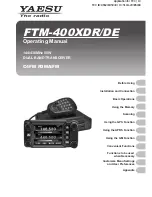
SEL-2890 Instruction Manual
Date Code 20210715
Introduction & Specifications
Applications
1.6
Serial Routing
The basic principle of serial routing is the ability to examine unsolicited data coming
into the serial port, compare the first 8 bytes of the message with a predefined mask,
and then route the message to a specified Internet Protocol (IP) address depending on
the examined information. Effectively, you can send messages out of a serial port
through the SEL-2890 and they can be routed to different destinations depending on
the first 8 bytes of the message. As many as three different routing masks are available
in the SEL-2890.
Serial Tunneling
Serial tunneling is the ability to make a virtual serial connection between two IEDs
across an Ethernet network. The object is to create a virtual serial cable that passes all
data from point to point across an Ethernet network and have this connection appear to
be completely transparent to the end serial devices. You can serial tunnel between the
SEL-2890 and port servers, serial hubs, SEL-2701 Ethernet processors, and other
SEL-2890 transceivers. However, the SEL-2890 transceivers were designed and tested
to provide a robust serial tunnel between each other. Serial tunneling to other devices
may have limitations on passing specific binary protocols.
The challenge of serial tunneling lies in the indeterministic nature of the Ethernet
network. A master device may send a message to a slave. The slave responds in a
timely fashion. But if the Ethernet packet containing the message has a collision, then
the packet will get re-sent. This may happen several times. If it happens too often, then
the data will return to the master with some appreciable delay. Some masters and
associated protocols may not be very tolerant of this timing condition. Typically, serial
tunneling is successful and reliable in a properly designed network. But, all protocols
and all networks are not compatible for serial tunneling. Test and understand your
particular application before installing in the field.
Different serial tunnel options are available in the SEL-2890. They are Commanded
Mode, Telnet, Transport Control Protocol (TCP), and Broadcast TCP (BTCP).
Commanded Mode
The Commanded mode of a serial tunnel provides the ability to make serial tunnels
dynamically with a command rather than with settings. This provides a convenient way
for software to control a network of serial tunnels. The software Telnets into the
SEL-2890 console and issues a TUNNEL [IP]:[Port] command, then the SEL-2890
establishes a Telnet tunnel to that device. The IP and Port information is stored in
volatile memory and therefore the Telnet tunnel will be set to “Off” if power is cycled
on the SEL-2890.
Содержание SEL-2890
Страница 1: ...SEL 2890 Ethernet Transceiver Instruction Manual PM2890 01 20210715 ...
Страница 6: ...This page intentionally left blank ...
Страница 8: ...This page intentionally left blank ...
Страница 26: ...This page intentionally left blank ...
Страница 42: ...This page intentionally left blank ...
Страница 52: ...This page intentionally left blank ...
Страница 56: ...This page intentionally left blank ...
Страница 80: ...This page intentionally left blank ...
Страница 84: ...This page intentionally left blank ...
Страница 85: ......
Страница 86: ......
















































